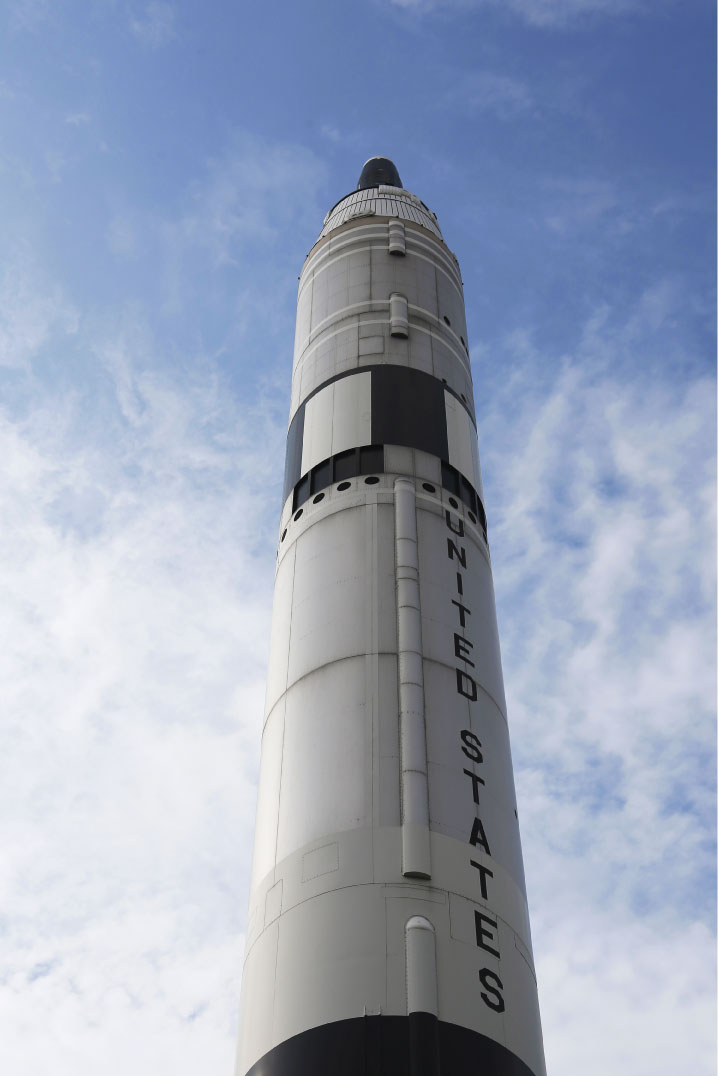WHAT IS THE NUCLEAR TRIAD?
The nuclear triad refers to the ways in which nuclear weapons can be delivered.
The triad is composed of three delivery methods: air, sea, and land:
1. Strategic Bombers
The United States maintains 76 B-52 jets and 20 B-2 jets to equipped to drop nuclear weapons. The strategic bomber fleet has approximately 300 warheads. Many of these aircraft were constructed soon after World War II and are over 50 years old.
B-2 Spirit bomber at Andersen Air Force Base – Photo courtesy U.S. Air Force
2. Submarines
The U.S. currently maintains 14 Trident submarines, each carrying 24 nuclear-tipped missiles, for a total of around 1,000 warheads. Depending on the type of warhead, each one is 7 to 30 times the power of the atomic bomb dropped on Hiroshima in 1945. These missiles are capable of striking both land and sea targets.
Ohio-class ballistic missile submarine USS Rhode Island – Photo courtesy U.S. Navy
3. Missiles
The U.S. maintains 440 Minuteman III intercontinental ballistic missiles (ICBMs) in underground silos around the United States. Each missile has the 20 to 31 times the explosive force of the bomb dropped on Hiroshima.
Vandenberg Airmen conduct Minuteman III flight test – Photo courtesy U.S. Air Force
The United States and Russia have maintained triad capabilities since the Cold War, while China has recently developed its triad capabilities.
WHY DOES THE TRIAD EXIST?
One word: redundancy. The intention of the triad was to maintain a constant threat of nuclear attack, one that was nearly impervious to attack. If bombers and land-based missiles were rendered inoperable, submarines could launch nuclear missiles. If submarines and land-based missiles didn’t succeed, bombers could do the job.
The triad was created in a time in which intentional nuclear war between countries was a serious possibility. That’s no longer the world we live in.
IS THE TRIAD STILL NECESSARY?
While some have argued that the current triad is necessary to maintain deterrence, Former Secretary of Defense William Perry has argued that deterrence can be maintained with two of the three components. Phasing out land-based missiles from the triad would reduce the risk of accidents and eliminate static ground targets within the United States. Eliminating these weapons has significant support from nuclear weapons experts and organizations such as the Union of Concerned Scientists, Ploughshares Fund, and Physicians for Social Responsibility.
The other two legs of the triad–decentralized submarines and a highly mobile air fleet–are more than sufficient to deter threats.
Components of the triad should be phased out as their useful lives expire. The alternative is spending billions to modernize planes, submarines, and missiles to prepare for an intentional nuclear war between countries that will never arrive.
READ MORE ABOUT THE NUCLEAR TRIAD:
NTI Tutorial: Missiles and Other WMD Delivery Systems
Former SecDef: Remove ICBMs from Nuclear Triad
U.S. Strategic Nuclear Forces: Background, Developments, and Issues
